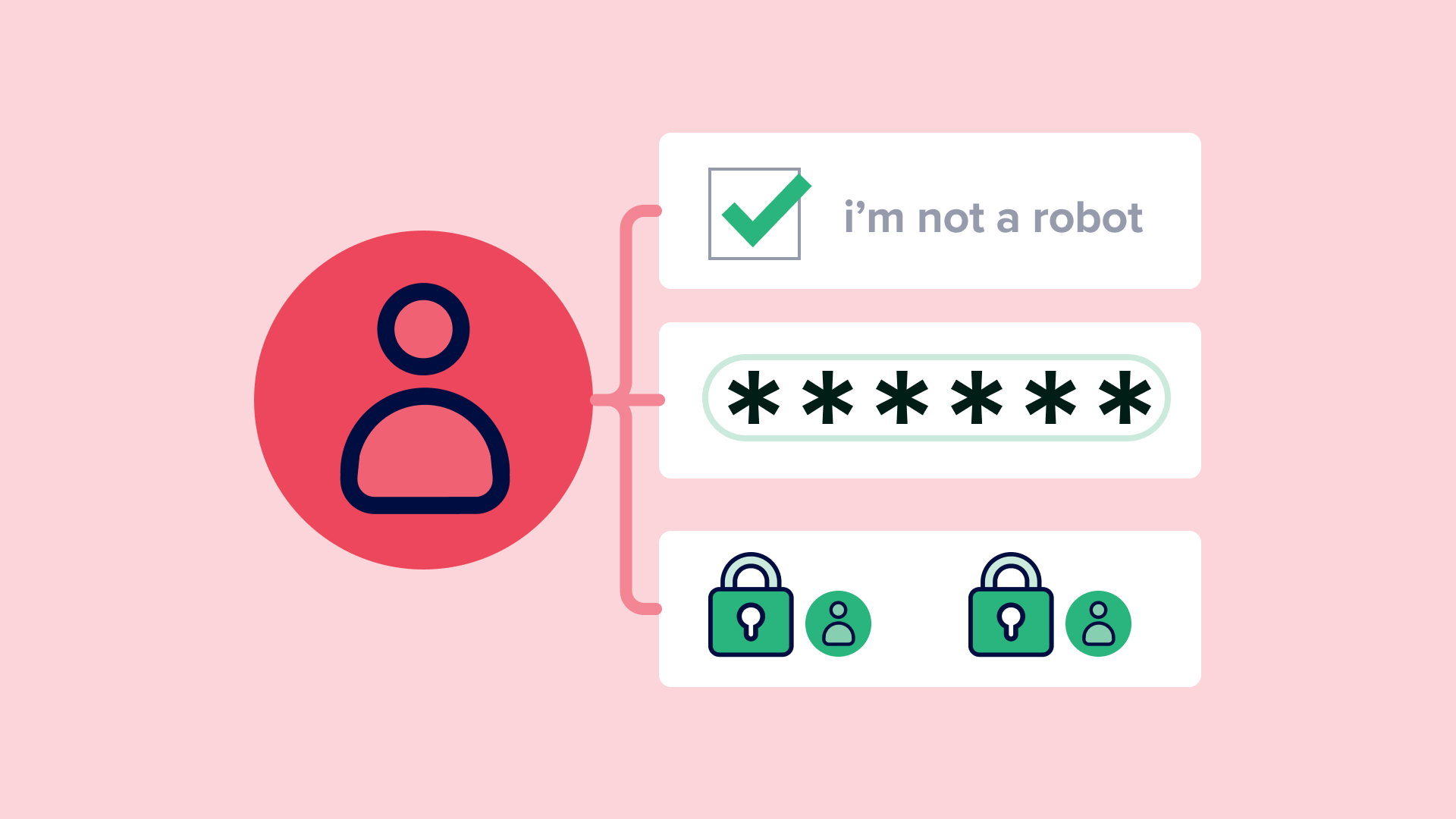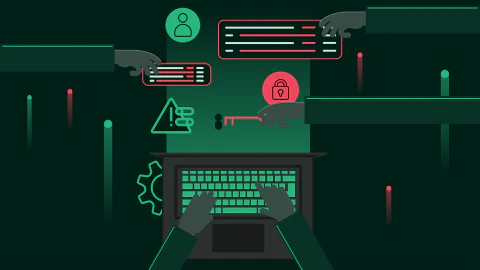Authentication is the security process that verifies a user’s identity in order to grant access to their online account. It also functions as the gateway to your product. It’s a workflow you can’t compromise on without risking negative impacts on your users and your company. Fortunately, there are lots of authentication services that can do the heavy lifting for you.
It’s important to understand what you can do in case of an authentication failure, when to do it, and why. So, in this post, I’ll walk you through what authentication failures are, how they happen, how they can impact your business, and how you can prevent them.
Does your team struggle with software audits? Is it a mess of screenshots and spreadsheets?
Learn how to automate itWhat Are Authentication Failures?
First, you need to understand what authentication failure really means.
Authentication is the process that verifies a user’s credentials and grants or revokes access to your application accordingly. Depending on the application, it can be a single step or multistep. If one part of the authentication workflow fails, it will result in the failure of the entire authentication process.
For instance, let’s say you have an authentication system where users enter their username and password and a security code you generate for them on a weekly basis. If the user enters an incorrect username, password, or security code, the authentication will fail. That, however, is just one-way authentication can fail.
The other way involves security loopholes and bottlenecks in your authentication workflow that can enable an illegitimate person to authenticate as a legitimate user. If an attacker finds a way to steal your user’s credentials because of a vulnerability in your system, that also counts as an authentication failure.
Types of Authentication Failures
Now let’s explore some common ways in which authentication failures can happen.
- Password-based authentication failure: This refers to a situation when a user cannot authenticate because of an incorrect password. It can also refer to a situation where an attacker steals another user’s password to log in or authenticate their account.
- Brute-force credential guessing: In this situation, an attacker attempts to guess credentials like a password through a brute force mechanism. For example, if an attacker is aware of a user’s previous passwords and attempts to guess a new password based on some personal information, the authentication fails at that point, and the attacker gains access to the user’s account.
- Multifactor authentication failure: Multifactor authentication makes the entire authentication workflow more secure by introducing one more layer of verification. For instance, a one-time password or code sent to the user’s email or registered device number will protect against an authentication failure where the attacker has stolen or already guessed the user’s password. The lack of a multifactor authentication system leaves more room for an authentication failure. Further, if there is any type of misconfiguration in the multifactor authentication itself, or if one of the steps of the multifactor system is compromised, that also causes an authentication failure.
- Biometric authentication failure: Biometric authentication involves the use of a fingerprint scan, facial recognition, etc. While it’s mostly secure, there are situations where biometric data is not captured entirely or the system itself is not configured properly. This also leads to an authentication failure.
The Impact of Authentication Failures
Now that you know what an authentication failure is and how it can happen, we can explore its impact.
Authentication failures affect your users, your company, and your brand. A failure to authenticate a user who has been using your application can be frustrating for them, especially if they need to perform time-sensitive actions or if they rely heavily on your application. That’s often the case, for example, with banking websites.
On the other hand, an authentication failure where an attacker gains access to the system can be catastrophic in so many other ways. First, an attacker could access sensitive data and information. That’s a disaster for you and for your user, and it’s the kind of thing that will directly affect your company’s reputation and brand.
Vulnerabilities That Can Result in Authentication Failures
There are many ways of introducing a vulnerability to your system that may result in an authentication failure. It could be due to negligence, a faulty or broken authentication workflow, missed edge cases, failure to comply with some security standards, etc. Let’s look at some common vulnerabilities that can result in one of these failures.
Weak Credentials
If your users have weak credentials it can be easy for the attacker to crack those credentials by guesswork or brute force. You should implement a credentials strength validator for both the username and password. You should also ensure that the same happens for users when they try to reset their passwords.
Having strong credentials validation in the authentication workflow but missing the same in the reset password workflow could lead to an authentication failure for your users.
Insecure Protocols
Always make sure you’re using HTTPS to carry out authentication rather than HTTP. That means your authentication API servers have an SSL certificate for the servers on your front end. Sending authentication requests over HTTP is insecure as attackers can easily steal credentials from the requests.
Poor or Improper Session Management
Session management covers a lot of things. How and where are you storing session IDs and authentication tokens? Do you automatically log users out after a period of inactivity? Do your authentication tokens expire?
Weakly implemented session management is one of the most common vulnerabilities that result in an authentication failure. Make sure that you use HTTP-only cookies to store authentication tokens and that you have proper TTL-based session IDs.
Flawed Two-Factor and Biometric Authentication Misconfiguration
Two-factor authentication and biometric authentication are nearly foolproof on their own. However, having a misconfigured biometric system or a loophole in your two-factor authentication can create an easily exploitable vulnerability for attackers.
How to Prevent Authentication Failures
Now that we’ve covered authentication failures, I’ll show you the measures you can take to prevent them.
- Implement protection against brute-force credential guessing. Don’t just let an attacker break into your user’s accounts using brute force or guesswork. Implement a CAPTCHA mechanism to prevent brute force attacks and rate limiting to prevent password guessing.
- Validate the strength of your user’s credentials. Be it the sign-up form, log-in form, or the reset password workflow, ensure that you have a mechanism to validate the strength of your user’s credentials everywhere. Any piece of data that helps in authentication should pass a benchmark for strength. Only then you should allow your users to save a credential.
- Use modern authentication mechanisms. Go for authentication workflows that are by nature more foolproof. These include two-factor authentication, passwordless authentication, biometric authentication, etc. There are plenty of resources out there that help you set them up.
- Use secure protocols. Never send authentication requests over plain HTTP. If your front-end and back-end servers don’t have SSL certificates with HTTPS implemented, get them now.
- Routinely monitor your system. Monitor your application routinely for unknown vulnerabilities that might lead to an authentication failure.
Conclusion
An authentication failure can lead to a deadly scenario for you and your users. Understanding what these failures are and how they happen can help you foolproof your application or website in the future. For more advice on improving your cybersecurity posture, you may also want to read our blog on command injection.
This post was written by Siddhant Varma. Siddhant is a full stack JavaScript developer with expertise in frontend engineering. He’s worked with scaling multiple startups in India and has experience building products in the Ed-Tech and healthcare industries. Siddhant has a passion for teaching and a knack for writing. He’s also taught programming to many graduates, helping them become better future developers.
















